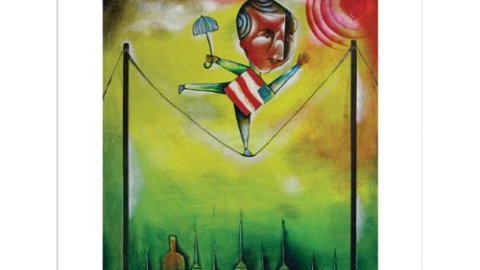The Healing Arts: Addiction and Art

Half a million people die annually in the United States from substance abuse or addiction, which represents 1 in 5 deaths overall. One-half trillion dollars are lost annually in the battle against abuse and addiction. Faced with those numbers, medical science recognizes that science itself may not be enough and turns to the humanities. “Science gives us the tools, but art gives the inspiration and the drive to make a difference in reducing addiction and helping people achieve recovery,” says the introduction to Addiction and ArtfromJohns Hopkins University Press. “What is more important—the tools or the drive? They are inseparable.” Marrying two disciplines that often stand in opposition, Addiction and Art unites science and art in the name of bringing the scourge of addiction to an end.
Addiction scientists recognized that part of the battle against addiction rested in the battle against public perceptions. Hoping to duplicate the success of And the Band Played On, Angels in America, and the AIDS Memorial Quilt to change public opinion regarding AIDS, addiction scientists at the Department of Psychiatry and Behavioral Sciences at Johns Hopkins University School of Medicine held Art and Addiction exhibitions from 2004 through 2008. Building upon those exhibitions, the Innovators’ Addiction Art Advisory Board, a unique group of addiction scientists and art professionals, broadcast a “Call to Artists” that drew responses from 394 different artists submitting approximately 1,000 works of art in diverse media. The board selected a representative gallery from those works to appear in Addiction and Art.
An artist’s statement accompanies each of the 61 works selected. These statements help clarify the work, but also, more importantly, amplify the human component of the art—the story that solidifies the connection and begins the understanding and the healing. The whole spectrum of addiction as well as of human emotions appears in these works. Pedro de Valdivia’s Recovery, which shows a man walking a tightrope above a threatening chasm of needles, graces the cover as the perfect emblem of the balancing act of the whole enterprise. Michael C. Mendez’s 99 Bottles of Beer on the Wall: A Child’s Introduction to Binge Drinking (for Andy) humorously deals with alcoholism, injecting one of the many lighter notes that eases some of the ponderousness of discussing addiction. Deborah Feller’s Toy Soldier shows a boy playing with toy soldiers beside his mother passed out drunk in a beautifully rendered charcoal drawing. A photographic self-portrait of Matthew Beals, who died in 2007 from AIDS and methamphetamine addition, is submitted by his sister Callyn, who describes the portrait as “represent[ing] the speed with which he lived his life and the drug that eventually ended it.” The most memorable image for me was Erich W. March’s The Addiction Savoir, which shows Christ “nailed” by a syringe and beer bottle piercing his hands. March describes his Christ as “a non-condemning, burden-bearing collaborator who loves the addicted beyond their faults and joins with them in the struggle to overcome their addiction.” Such pictures and words impress with their power to inspire and heal.
“By inviting us to engage with the experience of addiction and recovery in an immediate, personal, and often visceral way, art helps us move beyond stigma and stereotypes to recognize that substance abuse and addiction are our problem as a community, not just their failing as individuals,” the authors assert. It’s hard to argue against them. Addiction and Art nobly aims at providing support to family and friends of the suffering, giving inspiration to the addicted that they can find redemption, educating policymakers at every label to not blame the victims, and pushing addiction scientists to continue fighting this important fight. Addiction and Art may be the most important art book written this year.
[Many thanks to Johns Hopkins University Press for providing me with a review copy of Addiction and Art, edited by Patricia B. Santora, Margaret L. Dowell, and Jack E. Henningfield.]





